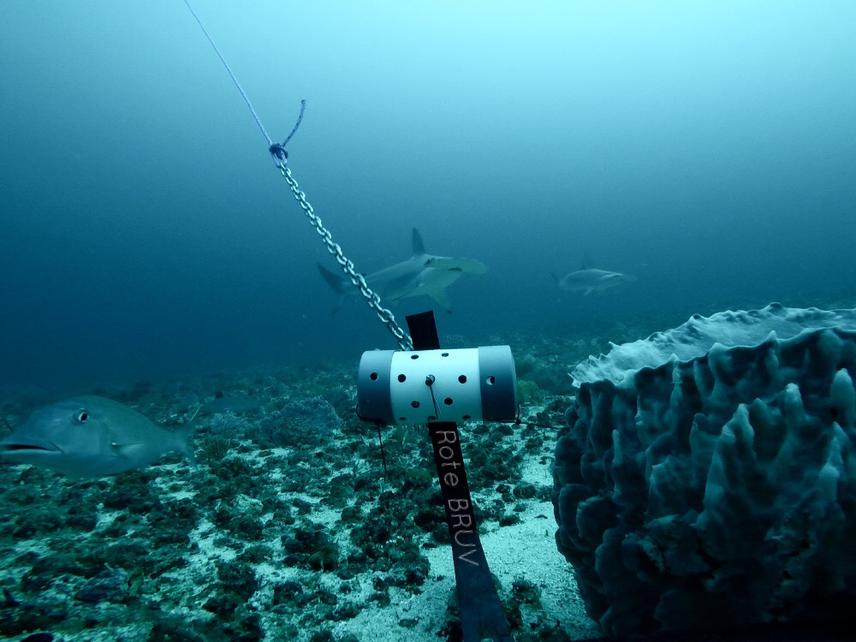Nesha Ichida
To date, we have identified 11 different species of elasmobranch around Rote Island, of which at least half are listed as vulnerable or endangered (IUCN Red List). This proposed project would use BRUVs to survey elasmobranch diversity and abundance at various depths and sites around Rote’s different MPA zones and habitats. Elasmobranch catch data will also be recorded at key landing sites with the help of local fishermen. The baseline data collected in this study will be vital in supporting effective conservation efforts for the increased protection and recovery of vulnerable sharks and rays in the most southerly island in Indonesia.

Scalloped Hammerhead (Sphyrna lewini) captured on BRUV survey at Rote Island. ©Nesha Ichida.
The project will focus on the biodiversity of sharks and rays, or elasmobranchs in Rote Island. Rote is the southernmost island of Indonesia and the southernmost part of the Savu Sea Marine National Park. Critical habitats such as extensive mangrove forest, sea grass beds and coral reefs surround the island. The project site is located at Rote’s main fishing area, which is surrounded by a network of no-take zones. The site is important for vulnerable marine megafauna such as both species of manta rays, whale shark, dugong, five species of sea turtles, saltwater crocodiles and a high species diversity of cetaceans. Local fishermen have, also reported data deficient species of conservation importance such as wedge fish and guitarfish, at fish landing sites. In order to improve the protections for elasmobranchs in Rote, it is critical that we have a better understanding of their populations.
This proposed study aims to provide the much needed baseline data on elasmobranch populations, diversity and abundance to help push and support further protection for vulnerable shark and ray species. The project aims will be reached by using Baited Remote Underwater Video (BRUV) survey, which is a less invasive method for elasmobranch monitoring and allows survey at sites not applicable by scuba diving. The study could also potentially find critical habitat for certain species of elasmobranch or other marine megafauna around Rote Island, further helping in the future protection and management of elasmobranchs. Furthermore, fisheries-dependent data collected in this proposed project will provide historical and current elasmobranch catch data and elucidate their importance in Rote’s fishing industry.